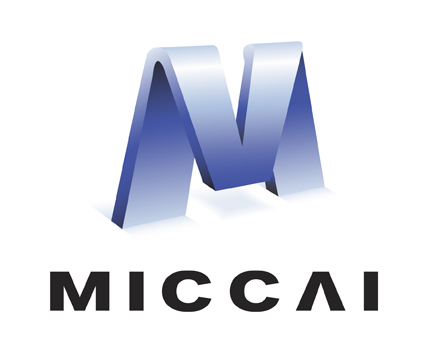Abstract
Positron emission tomography (PET) is an advanced nuclear imaging technique with an irreplaceable role in neurology and oncology studies, but its accessibility is often limited by the radiation hazards inherent in imaging. To address this dilemma, PET enhancement methods have been developed by improving the quality of low-dose PET (LPET) images to standard-dose PET (SPET) images. However, previous PET enhancement methods rely heavily on the paired LPET and SPET data which are rare in clinic. Thus, in this paper, we propose an unsupervised PET enhancement (uPETe) framework based on the latent diffusion model, which can be trained only on SPET data. Specifically, our SPET-only uPETe consists of an encoder to compress the input SPET/LPET images into latent representations, a latent diffusion model to learn/estimate the distribution of SPET latent representations, and a decoder to recover the latent representations into SPET images. Moreover, from the theory of actual PET imaging, we improve the latent diffusion model of uPETe by 1) adopting PET image compression for reducing the computational cost of diffusion model, 2) using Poisson diffusion to replace Gaussian diffusion for making the perturbed samples closer to the actual noisy PET, and 3) designing CT-guided cross-attention for incorporating additional CT images into the inverse process to aid the recovery of structural details in PET. With extensive experimental validation, our uPETe can achieve superior performance over state-of-the-art methods, and shows stronger generalizability to the dose changes of PET imaging. The code of our implementation is available at https://github.com/jiang-cw/PET-diffusion.
Access this chapter
Tax calculation will be finalised at checkout
Purchases are for personal use only
Similar content being viewed by others
References
Buades, A., Coll, B., Morel, J.: A non-local algorithm for image denoising. In: 2005 IEEE Computer Society Conference on Computer Vision and Pattern Recognition, vol. 2, pp. 60–65 (2005)
Chen, S., Ma, K., Zheng, Y.: Med3D: transfer learning for 3D medical image analysis. arXiv preprint arXiv:1904.00625 (2019)
Cui, J., et al.: PET image denoising using unsupervised deep learning. Eur. J. Nucl. Med. Mol. Imaging 46(13), 2780–2789 (2019)
Dabov, K., Foi, A., Katkovnik, V., Egiazarian, K.: Image denoising with block-matching and 3D filtering. Image Process. Algorithms Syst. Neural Netw. Mach. Learn. 6064, 354–365 (2006)
Dosovitskiy, A., Brox, T.: Generating images with perceptual similarity metrics based on deep networks. In: Advances in Neural Information Processing Systems, vol. 29 (2016)
Ho, J., Jain, A., Abbeel, P.: Denoising diffusion probabilistic models. In: Advances in Neural Information Processing Systems, vol. 33, pp. 6840–6851 (2020)
Hofheinz, F., et al.: Suitability of bilateral filtering for edge-preserving noise reduction in PET. EJNMMI Res. 1(1), 1–9 (2011)
Jiang, C., Pan, Y., Cui, Z., Nie, D., Shen, D.: Semi-supervised standard-dose PET image generation via region-adaptive normalization and structural consistency constraint. IEEE Trans. Med. Imaging (2023)
Jiang, C., Pan, Y., Cui, Z., Shen, D.: Reconstruction of standard-dose PET from low-dose PET via dual-frequency supervision and global aggregation module. In: 2022 IEEE 19th International Symposium on Biomedical Imaging (ISBI), pp. 1–5 (2022)
Khader, F., et al.: Medical diffusion-denoising diffusion probabilistic models for 3D medical image generation. arXiv preprint arXiv:2211.03364 (2022)
Lu, W., et al.: An investigation of quantitative accuracy for deep learning based denoising in oncological PET. Phys. Med. Biol. 64(16), 165019 (2019)
Lu, Z., Li, Z., Wang, J., Shen, D.: Two-stage self-supervised cycle-consistency network for reconstruction of thin-slice MR images. arXiv preprint arXiv:2106.15395 (2021)
Luo, Y., et al.: 3D transformer-GAN for high-quality PET reconstruction. In: de Bruijne, M., et al. (eds.) MICCAI 2021. LNCS, vol. 12906, pp. 276–285. Springer, Cham (2021). https://doi.org/10.1007/978-3-030-87231-1_27
Luo, Y., et al.: Adaptive rectification based adversarial network with spectrum constraint for high-quality PET image synthesis. Med. Image Anal. 77, 102335 (2022)
Noroozi, M., Favaro, P.: Unsupervised learning of visual representations by solving jigsaw puzzles. In: Leibe, B., Matas, J., Sebe, N., Welling, M. (eds.) ECCV 2016. LNCS, vol. 9910, pp. 69–84. Springer, Cham (2016). https://doi.org/10.1007/978-3-319-46466-4_5
Oktay, O., et al.: Attention U-Net: learning where to look for the pancreas. arXiv preprint arXiv:1804.03999 (2018)
Onishi, Y., et al.: Anatomical-guided attention enhances unsupervised PET image denoising performance. Med. Image Anal. 74, 102226 (2021)
Rombach, R., Blattmann, A., Lorenz, D., Esser, P., Ommer, B.: High-resolution image synthesis with latent diffusion models. In: Proceedings of the IEEE/CVF Conference on Computer Vision and Pattern Recognition, pp. 10684–10695 (2022)
Slovis, T.L.: The ALARA concept in pediatric CT: myth or reality? Radiology 223(1), 5–6 (2002)
Song, T., Yang, F., Dutta, J.: Noise2Void: unsupervised denoising of PET images. Phys. Med. Biol. 66(21), 214002 (2021)
Wang, Y., et al.: 3D auto-context-based locality adaptive multi-modality GANs for PET synthesis. IEEE Trans. Med. Imaging 38(6), 1328–1339 (2019)
Yan, J., Lim, J., Townsend, D.: MRI-guided brain PET image filtering and partial volume correction. Phys. Med. Biol. 60(3), 961 (2015)
Yie, S., Kang, S., Hwang, D., Lee, J.: Self-supervised PET denoising. Nucl. Med. Mol. Imaging 54(6), 299–304 (2020)
Zhang, R., Isola, P., Efros, A.A., Shechtman, E., Wang, O.: The unreasonable effectiveness of deep features as a perceptual metric. In: Proceedings of the IEEE Conference on Computer Vision and Pattern Recognition, pp. 586–595 (2018)
Zhang, X., et al.: Total-body dynamic reconstruction and parametric imaging on the uEXPLORER. J. Nucl. Med. 61(2), 285–291 (2020)
Acknowledgment
This work was supported in part by National Natural Science Foundation of China (No. 62131015), Science and Technology Commission of Shanghai Municipality (STCSM) (No. 21010502600), The Key R&D Program of Guangdong Province, China (No. 2021B0101420006), and the China Postdoctoral Science Foundation (Nos. BX2021333, 2021M703340).
Author information
Authors and Affiliations
Corresponding author
Editor information
Editors and Affiliations
Rights and permissions
Copyright information
© 2023 The Author(s), under exclusive license to Springer Nature Switzerland AG
About this paper
Cite this paper
Jiang, C. et al. (2023). PET-Diffusion: Unsupervised PET Enhancement Based on the Latent Diffusion Model. In: Greenspan, H., et al. Medical Image Computing and Computer Assisted Intervention – MICCAI 2023. MICCAI 2023. Lecture Notes in Computer Science, vol 14220. Springer, Cham. https://doi.org/10.1007/978-3-031-43907-0_1
Download citation
DOI: https://doi.org/10.1007/978-3-031-43907-0_1
Published:
Publisher Name: Springer, Cham
Print ISBN: 978-3-031-43906-3
Online ISBN: 978-3-031-43907-0
eBook Packages: Computer ScienceComputer Science (R0)






